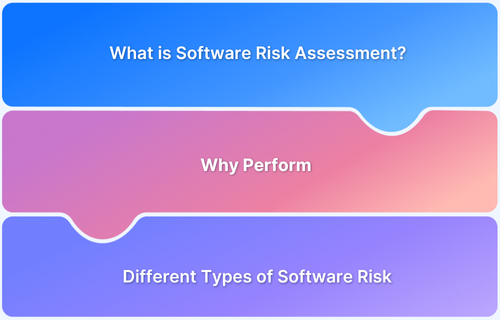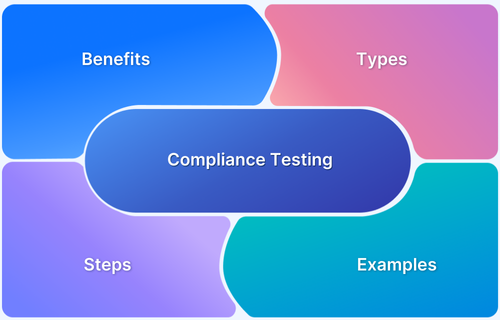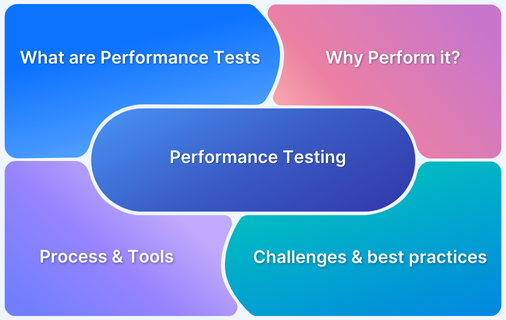What happens when risk, compliance and performance converge yet remain misaligned in an organisation?
Consider this: 85% of professionals report that regulatory obligations have become more complex over the past three years. Meanwhile, only 64% of boards receive periodic compliance‑reports, leaving more than one‑third without consistent oversight.
At the same time, companies that suffered data breaches as a result of non‑compliance incurred average additional costs of US $4.61 million.
This combination of rising complexity, limited governance oversight and increasing financial exposure illustrates a fundamental challenge. Organisations must balance taking bold strategic action (performance) while managing risk and staying compliant.
This guide explains why aligning risk, compliance, and performance matters, what to monitor, and how to act effectively.
How QA can help reduce Risks and Improve Software Quality?
Risk management is a cornerstone of QA, as it directly impacts software quality. Effective QA processes help identify risks early, minimize the likelihood of defects, and ensure software meets both functional and non-functional requirements.
By implementing robust testing practices, QA teams can reduce risks associated with both technical issues (e.g., bugs and vulnerabilities) and business concerns (e.g., regulatory compliance). QA reduces risks by:
- Identifying Critical Bugs Early: By detecting defects early in the development cycle, QA prevents critical issues from reaching production, which can lead to costly downtime or security vulnerabilities.
- Ensuring Compliance: QA processes ensure that software meets legal and industry-specific compliance requirements, avoiding legal ramifications and fines.
- Performance Optimization: QA teams ensure that software performs under various loads and conditions, helping reduce risks related to poor user experience or system failure under stress.
By implementing effective QA strategies, organizations can dramatically improve software quality and reduce the risks associated with launching faulty or non-compliant applications.
Read More: How to Perform Software Risk Assessment
Strategies for reducing Production Bugs through Effective QA Practices
Reducing production bugs is crucial to improving both user satisfaction and software reliability. Production bugs often result from insufficient testing, rushed development cycles, or miscommunication between development and QA teams.
Here are some effective QA strategies to reduce production bugs:
- Shift-Left Testing: In this approach, testing is integrated early in the development cycle, starting from the initial stages of coding. This proactive approach helps identify and resolve issues before they escalate into costly production bugs.
- Comprehensive Test Coverage: Ensuring that all features and user flows are adequately tested is essential. QA should focus on unit testing, integration testing, system testing, and regression testing to ensure full coverage.
- Continuous Testing: By embedding automated tests into the CI/CD pipeline, QA teams can quickly validate new code changes and ensure that bugs are detected early and resolved promptly.
- Collaboration Between Developers and QA: Ensuring that developers and QA teams work closely throughout the development cycle can help identify potential issues faster and improve overall code quality.
By embedding these strategies into the development process, QA teams can significantly reduce production bugs, saving time, costs, and reputational damage.
The True Cost of Fixing Issues Late in Development
Fixing bugs late in the development process is costly, both in terms of time and resources. As the development cycle progresses, the complexity of identifying and resolving issues increases. The cost of fixing bugs late is compounded by factors such as:
- Increased Rework: Late-stage bug fixes often require developers to revisit previously completed work, leading to rework and delayed timelines.
- Increased Testing Effort: Identifying the root cause of issues later in the cycle means QA teams need more time to diagnose and resolve bugs, which delays product releases.
- Impact on Deployment: Bugs found late in development can push back release schedules, delaying product launches and causing missed business opportunities.
- Quality Assurance Bottlenecks: QA teams are under pressure to quickly resolve issues in the final stages, often leading to rushed testing and potentially introducing new defects.
To mitigate these costs, it’s essential for organizations to adopt early and continuous testing practices and integrate QA earlier into the development process. Shifting left not only improves software quality but also helps organizations save on the significant costs associated with fixing bugs late in development.
The Role of QA in Ensuring Compliance with Industry Standards
In regulated industries, compliance is not optional—it’s essential. Quality Assurance teams are integral in ensuring that software adheres to industry regulations and standards.
From data privacy laws to financial regulations, QA teams help ensure that software meets all necessary compliance requirements. Ensuring compliance with QA involves:
- Test Case Design Based on Regulations: QA teams need to design test cases that validate compliance with applicable regulations such as GDPR, HIPAA, or PCI-DSS.
- Audit Trails and Documentation: Maintaining accurate records of testing activities is critical for compliance audits. QA teams document test procedures, results, and defect logs to ensure the software meets regulatory standards.
- Security and Privacy Testing: In highly regulated sectors, ensuring the privacy and security of user data is a key compliance requirement. QA teams perform security testing to ensure that sensitive data is protected and secure.
By integrating compliance into QA processes, organizations can ensure that their software products meet legal and regulatory requirements, avoiding potential fines and reputational damage.
Read More: What is Compliance Testing?
Key Compliance Frameworks and How QA Aligns with Them
QA teams play a pivotal role in aligning software with key compliance frameworks. Some common compliance frameworks that QA teams must consider include:
- GDPR (General Data Protection Regulation): QA teams validate that applications adhere to GDPR requirements for data protection, including user consent and data storage limitations.
- PCI-DSS (Payment Card Industry Data Security Standard): QA ensures that payment systems meet PCI-DSS requirements by testing for vulnerabilities and ensuring secure payment data handling.
- HIPAA (Health Insurance Portability and Accountability Act): QA tests to ensure that software in healthcare industries meets HIPAA standards for protecting patient data.
- SOX (Sarbanes-Oxley Act): QA validates that financial systems comply with SOX, ensuring that financial reporting is accurate and transparent.
By incorporating these compliance frameworks into the QA process, organizations can ensure their products meet the necessary standards for operation in regulated industries.
The Role of Security Testing in Protecting Business Interests
Security testing is an essential part of QA in safeguarding business interests. QA teams help identify vulnerabilities in software applications that could lead to data breaches, loss of customer trust, or financial losses. Security testing for leadership is crucial to ensure that critical security gaps are identified and mitigated proactively.
Security testing involves:
- Penetration Testing: Simulating attacks to identify weaknesses in the application that could be exploited by malicious users.
- Vulnerability Scanning: Using automated tools to scan software for known vulnerabilities.
- Data Protection Testing: Verifying that sensitive data is encrypted and handled securely, and that privacy policies are adhered to.
- Access Control Testing: Ensuring that only authorized users can access sensitive data and features.
By prioritizing security testing, organizations can protect their business interests, safeguard customer data, and prevent the financial and reputational damage that comes with security breaches.
Benefits of Automating Compliance Testing
Test automation plays a crucial role in ensuring consistent, efficient, and repeatable compliance testing. Automated tests can verify that software meets compliance requirements across various scenarios and help organizations keep up with the evolving regulatory landscape.
The benefits of automating compliance testing include:
- Speed and Efficiency: Automated tests reduce the time needed for compliance testing, allowing teams to validate regulatory requirements quickly.
- Accuracy and Consistency: Automated tests ensure that compliance checks are performed accurately and consistently every time.
- Cost Savings: By automating repetitive compliance checks, organizations can reduce manual testing efforts and focus resources on more complex tasks.
- Scalability: Automation enables organizations to scale their compliance testing efforts as the application grows or when regulations change.
By adopting automated compliance testing, organizations can ensure that their software remains compliant while reducing manual testing effort and errors.
How Continuous Testing Reduces Risks, Increases Compliance, and Boosts Performance
Continuous testing integrates automated testing into every development stage, providing real-time feedback and helping teams identify and fix issues early.
- Reducing Risks: By continuously testing code changes, defects are caught early, preventing critical bugs from reaching production and reducing the risk of downtime and security issues.
- Increasing Compliance: Continuous testing ensures that software meets regulatory standards like GDPR, HIPAA, and PCI-DSS by automating compliance checks with every release, ensuring consistent adherence to requirements.
- Boosting Performance: Regular performance tests throughout development identify issues early, optimizing speed, load times, and overall user experience, leading to better performance and fewer post-release issues.
Why Choose BrowserStack for Continuous Testing?
BrowserStack offers a comprehensive platform for continuous testing, enabling teams to automate testing across real devices and browsers, ensuring faster, more reliable releases.
- Real-Device Testing: Test on 3500+ real devices and browsers without maintaining physical infrastructure.
- Automation Ready: Seamlessly integrates with Selenium, Cypress, Playwright, and other automation frameworks for CI/CD.
- Cross-Browser/Device Coverage: Ensure consistency and performance across all environments and devices.
- Powerful Analytics: Access real-time analytics and insights to quickly identify, debug, and resolve issues.
- Scalability: Handle large-scale testing with ease, supporting both small teams and enterprise-level needs.
- Compliance Assurance: Automate compliance checks and ensure your software adheres to industry standards like GDPR, HIPAA, and PCI-DSS.
Optimizing QA for Risk Reduction, Compliance, and Performance
Effective QA optimization involves integrating risk management, compliance, and performance testing to ensure that software meets all required standards without compromising quality. By aligning these objectives, QA teams can minimize risks, ensure compliance, and deliver high-performing applications.
Key optimization strategies include:
- Holistic Test Strategies: Combining functional, performance, security, and compliance testing to provide comprehensive quality assurance.
- Risk-Based Testing: Prioritizing critical areas that impact risk, compliance, and performance to allocate resources more effectively.
- Continuous Improvement: Implementing feedback loops and refining testing practices based on insights from testing analytics.
By optimizing QA processes, organizations can streamline their approach to risk reduction, compliance, and performance, improving software quality across the board.
Get Expert QA Guidance Today
Schedule a call with BrowserStack QA specialists to discuss your testing challenges, automation strategies, and tool integrations. Gain actionable insights tailored to your projects and ensure faster, more reliable software delivery.
Conclusion
By adopting robust QA strategies, organizations can reduce production bugs, minimize the cost of fixing bugs late, ensure compliance with industry regulations, and secure business-critical applications.
Integrating test automation in regulated industries and focusing on security testing for leadership are key to building secure, high-performing, and compliant software. Through continuous testing, collaboration, and optimization, QA teams play a pivotal role in safeguarding both software quality and business interests.







